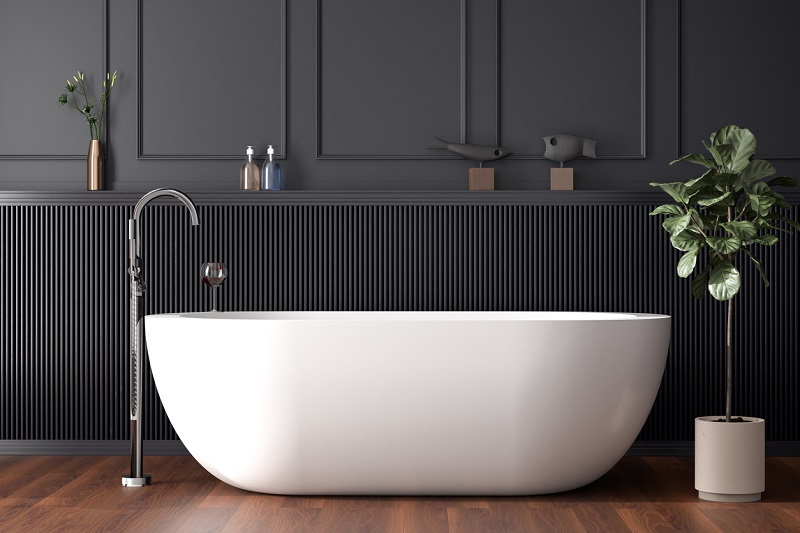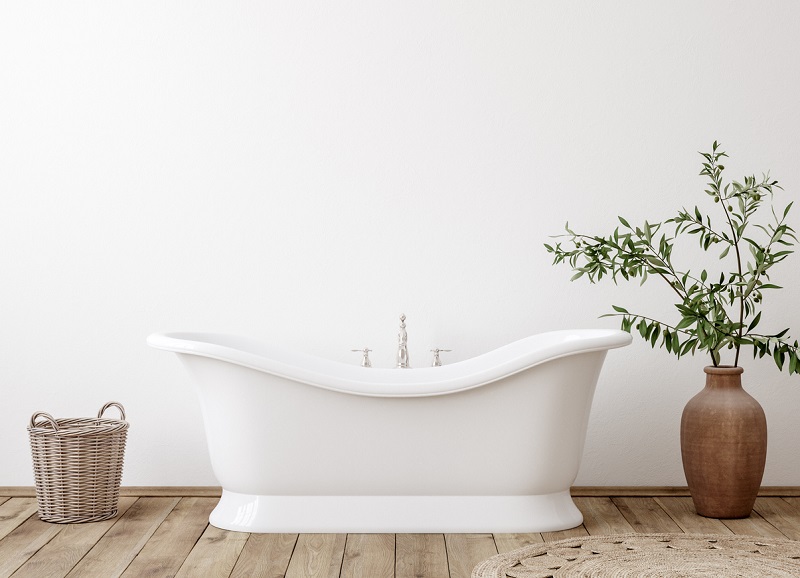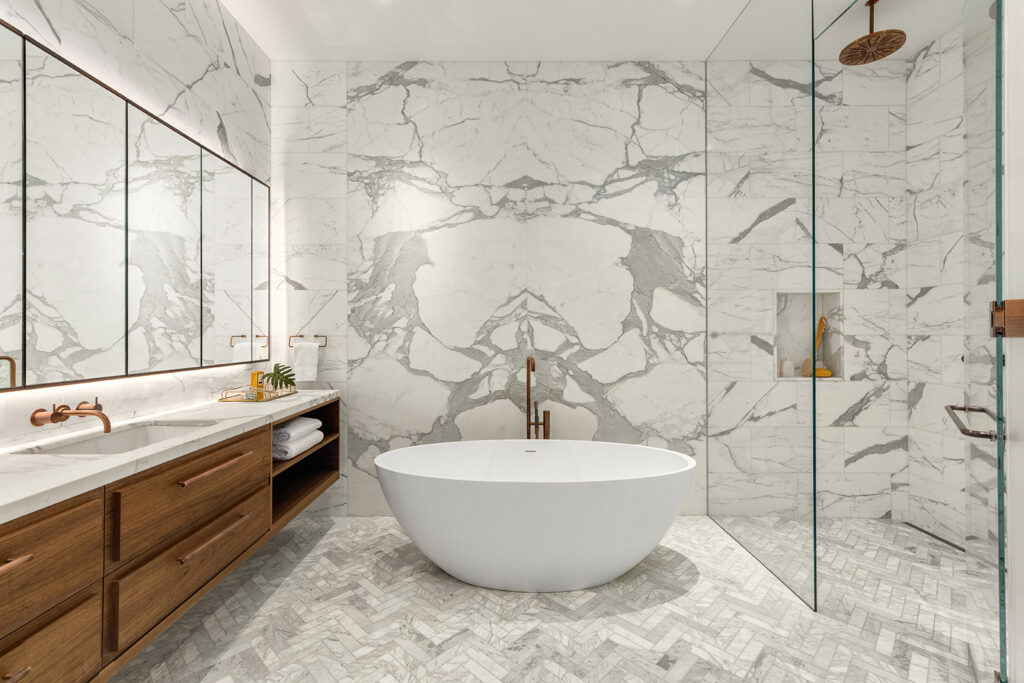
One-Piece vs Two Piece Toilet – Pros and Cons- 2025 Expert Guide
When upgrading your bathroom, one of the most important—and often overlooked—decisions is choosing between a one-piece or two-piece toilet. While
Plants make a wonderful addition to any home no matter the size. In addition to granting health benefits such as cleaner air and warding off insects, plants can help bring a splash of color and vibrancy to an otherwise drab room. So let us look at some of the most popular plants of 2021 so you can see what fits best in your bathroom.

Named for its longevity, an eternity plant can grow with little water and low to medium light, making it ideal for almost any bathroom. The plant has wide, attractive dark green leaves that make them ideal for any home, additionally, they are drought tolerant and will only grow to a height of 2-3 feet. Native to sub-Saharan Africa, this plant is able to thrive with very little human attention.
Snake plants, native to southern Africa are plants of the succulent variety, making them quite forgiving and great for beginners. Preferring bright, indirect light, these plants are ideal for the bathroom as they can help to purify the air of toxins.
A Phalaenopsis or moth orchid, remains one of the most common orchid varieties found in the home, due to its ease of production and availability all year around. Moth Orchids can grow easily in any home and stay in bloom for a long period of time, additionally, they can also be repotted anytime. Caring for them will require some significant attention however as they will need consistent light and moisture, so it is not recommended for beginner plant owners.
Earth stars or Cryptanthus Bromeliads, is a plant that requires humid moistures to thrive and survive. Native to rainforest habitats, earth stars are ideal for bathrooms due to the moisture of the environment. They make visually striking centerpieces due to their vibrant colors.
A versatile and adaptable plant, spider plants make great houseplants due to their ability to grow in a wide variety of environments and do not require constant care to survive. The name comes from the leaves that dangle down, similar to spiders on a web.
With a name derived from Hercule’s adventures, the trunk of a dracaena tree is meant to resemble a dragon’s scaly leg. Dragon trees are known to be one of the easiest plants to care for as they require little maintenance while bringing a strong indoor air-purifier into your bathroom.
Belonging to a group of about 18 species of epiphytic ferns, staghorn ferns are native to Africa, Australia and Southeast Asia. Their name derives from the fronds of the plant resembling the forked antlers of a deer or elk. It is a common ornamental plant due to its ease of growth and its ability to thrive in temperate environments.

Air plants, as their name suggests, absorb nutrients and water from the air straight through the pores of their leaves. They thrive as houseplants as their life span is fairly short-3-4 weeks, depending on the species. But in that time, they can flower if properly cared for, and they produce offspring that you can care for in much the same way.
Popular in southeast Asia and asian countries, Lucky Bamboo isn’t actually bamboo. The plant is of the Dracaena family, tying them closer to the dragon tree, but that being said, they still strike an attractive hue in any household. Lucky bamboo is easy to care for and in Chinese culture, the number of stalks that a household can grow is tied to their fortune and luck, hence the name.
Nephrolepis exaltata, otherwise known as sword fern or Boston fern is an excellent plant for the bathroom due to its need for high humidity and indirect light. It’s name comes from a Massachusetts florist named Becker who cultivated it as a popular parlor plant.
A plant that comes from the jungles of the Amazon, Calathea makes great houseplants due to their vibrant appearance and diversity. Their leaves vary with geometric patterns and maroon undersides, making them highly decorated plants when compared to other houseplants. Often hailed as “drama queens”, Calathea have a reputation for being finicky, but that trait is only true of a few species.
A common houseplant due to it’s beauty and simplicity to care for. Peace lilies originate from the tropics and as such, enjoy a nice humid environment. Replicating this environment is key to having a happy and healthy plant. Keep in mind that peace lilies are mildly toxic, as they contain calcium oxalate-a substance that can cause stomach and respiratory irritation if ingested in large amounts so keep out of reach of small children and pets.
A great plant for beginners, Pothos or Epipremnum Aureum comes in an array of foliage colors and patterns that are vibrant and diverse. Pothos are remarkably forgiving of neglect, pest and disease free and tolerant of low lights, making them ideal for the bathroom.
A very common and typical houseplant, Begonias are generally grown for their striking foliage and the fact that they can produce flowers. Generally on the smaller side, they can bring much needed color to a home with proper care. Compared to other plants, Begonias thrive based on location alone, so it is best to find a suitable location for them before purchasing.
Often confused for the Calathea plant, Prayer Plants are distinguishable by their vibrant decorative leaves. These leaves are tricolor with green, yellow and red patterns. It’s name is derived from the leaves that lay flat during the day and fold up during the night as if it’s praying.
An attractive succulent whose natural juices can be used to provide temporary relief from scrapes and painful burns if applied topically. It’s medicinal properties were used throughout the ancient world, most notably in Egypt. Today, the plants provide an attractive centerpiece for any home and are quite easy to care for.
Bromeliads are tropical and subtropical plants with cascading foliage that form beneath rosette-shaped leaves that often flower for several months. Native to the tropical Americas, Bromeliads can provide any home with a great variety of color and variety.
Bird nest ferns are native to the rainforest, making them ideal for the moisture and potential humidity of the home. Additionally, as it is a fern, they make great plants for beginners as they are easy to care for. They are identified by the bright green fronds that rise from their central rosette.
A slow growing plant that is identified by its plain green, speckled and blotched leaves. Chinese evergreens have a reputation for being durable and remarkably easy to care for. They are tolerant of many different growing conditions and environments and can thrive in medium to low light conditions.
Originating from South-East Asia, Croton plants are a plant that thrives in tropical climates. Their leaves range from a combination of either green, yellow, red, orange, cream pink and black, making them quite unique and varied in appearance. These plants have a reputation for being fussy and difficult to care for, so they are not recommended for beginners.
Comprising over 880 different types and over 22,000 species, orchids are among the largest and most diverse of the flowering plant families. Orchids are traditionally tropical plants but have now been hybridized by florists so that they can grow in the household.
A member of a large family of 500 ornamental foliage plants, Peperomia are native to tropical and subtropical regions of Central America. Peperomia are interesting houseplants as no two plants look alike, allowing for a sizable collection of a singular plant. In addition, peperomia plants are strangely compact, rarely growing more than a foot in height, making them ideal for small indoor spaces like a bathroom.
Haworthia is a miniature succulent variety native to South Africa and as discussed previously, makes it a great plant for beginners due to the independent nature of the plant itself. Haworthia is characterized by rosette-shaped leafy clusters which can be firm, tough or translucent, depending on the plant.
Nepenthes are a wide genus of tropical plants known as pitcher plants. The name comes from the distinctive pitcher of the plant that houses liquid that attracts and digests insects as food. As you can expect, pitcher plants help to keep your bathroom free of any unwanted insects.

Eric is the founder and president of Badeloft USA. He has been the president of Badeloft’s US division for over ten years and oversees all marketing and branding aspects of Badeloftusa.com.
His expertise lies in small business development, sales, and home and bathroom industry trends and information.
Contact us with any business related inquiries.

Free material samples and tub templates

When upgrading your bathroom, one of the most important—and often overlooked—decisions is choosing between a one-piece or two-piece toilet. While

Small details, including what you place on the floor, can make a big difference when setting up or upgrading your

Plumbing traps may seem like small components, but they are critical in keeping your home safe and odor-free. Two of
When shopping for new bath linens, the difference between a bath towel and a bath sheet can feel subtle, but
Request your free material sample below. By submitting, you agree to receive occasional product updates and offers from Badeloft. Unsubscribe anytime.
"*" indicates required fields
"*" indicates required fields
"*" indicates required fields